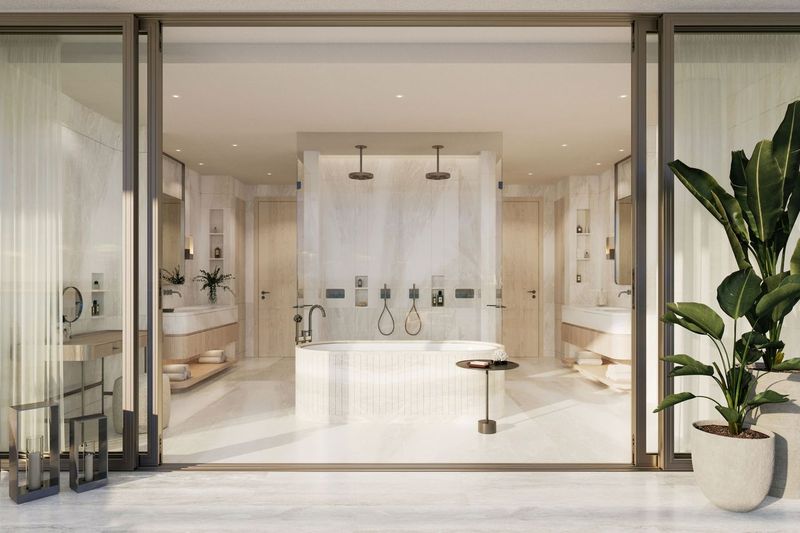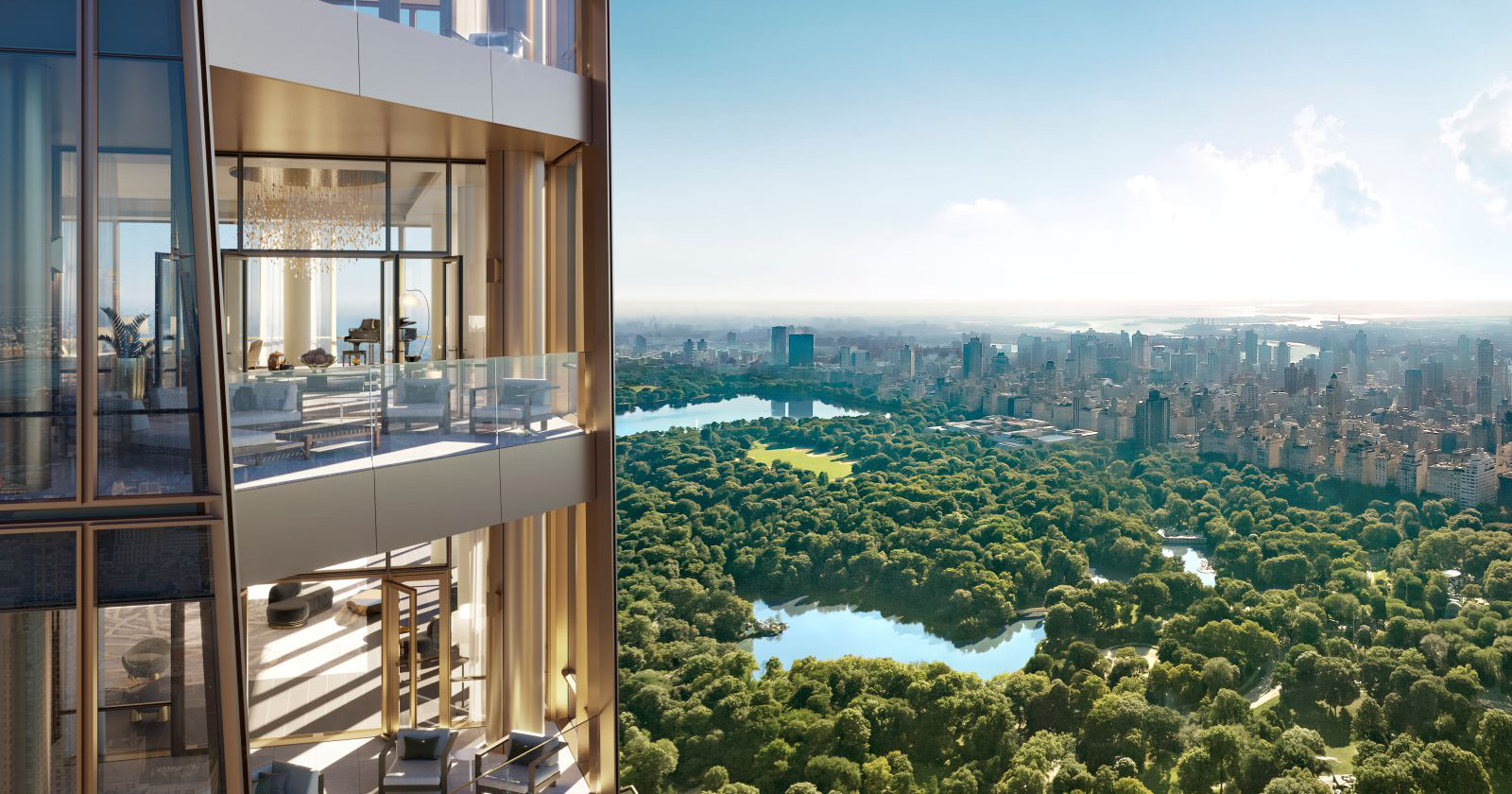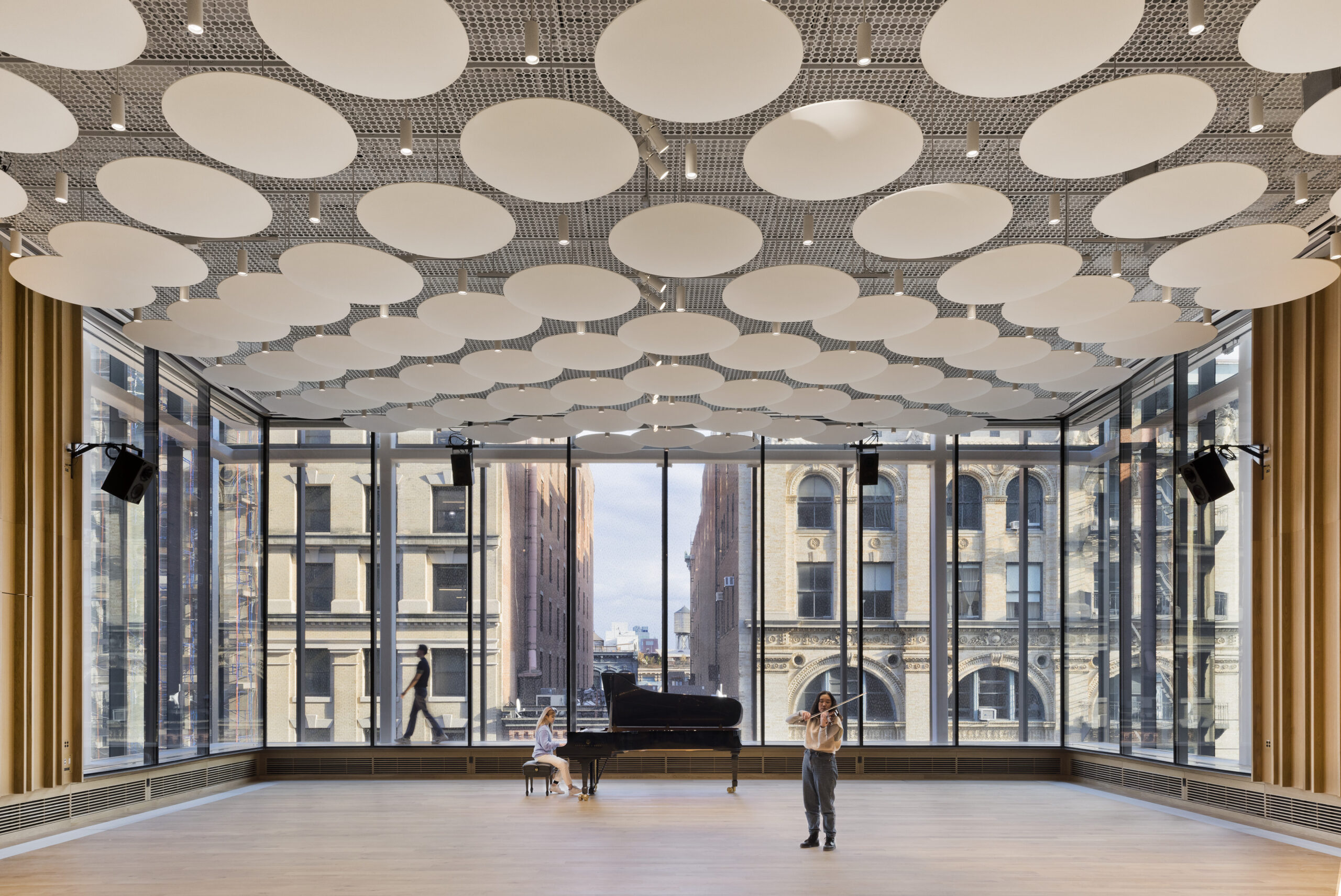Ema is a trained architect, writer and photographer who works as a Junior Architect at REX in NYC. Inspired by her global experiences, she shares captivating insights into the world’s most extraordinary cities and buildings and provides travel tips on her blog, The Travel Album.
Most of us are familiar with pre-ordering books, movies, clothing items and devices — paying in advance to secure one of the newest and most sought-after versions of that item. In the ever-evolving world of real estate, the concept of pre-selling residential units has gained significant traction. Developers often market and sell units based on detailed renderings and visualizations before the building is even constructed. This practice has become a staple in the industry, providing benefits to both developers and early investors. However, it also poses risks and challenges that buyers must consider. This article explores the trend of pre-selling residential units, showcasing select examples that demonstrate the compelling power of renderings and their impact on buyers.
Would you consider purchasing a condo years before it’s built, based solely on attractive renderings and the promise of a great building with no physical structure to inspect? What about the experience of seeing, touching, and even smelling your home before making such a significant purchase? How can you be certain that everything promised will be delivered?
The Concept of Pre-Selling
Pre-selling refers to the practice of selling residential units before the completion of construction. This approach allows developers to secure necessary funding, gauge market interest and mitigate financial risks. Buyers, on the other hand, often benefit from lower pre-construction prices and the opportunity to customize their units. However, purchasing a property based on renderings involves inherent risks, such as potential changes in design, construction delays, and discrepancies between the promised and delivered product.
I’ve seen projects unable to start construction until a certain percentage of units are pre-sold, ensuring significant interest before breaking ground. But I have always wondered, what makes people so drawn to this concept? Typically, buildings in a big pre-sale phase are high-end and brand-new with many perks, great locations and extensive amenities. This makes them attractive, hence the marketing and early sales strategy. Perhaps it’s the notion that you’re making a valuable real estate investment in something exclusive, with the potential risk of it selling out, or becoming more expensive if you wait. The allure of such an incredible building, combined with the fear of missing out, drives people to commit early to secure their place. Financial incentives, such as pre-sale discounts, flexible payment plans and customization options, further entice buyers. A well-established legal and financial framework, including escrow accounts and buyer protections, enhances buyer confidence. These conditions and tactics make pre-construction investments more appealing and convincing.
The Role of Renderings
Renderings are crucial in any architectural project for selling the client on the design. Without the ability to visualize the design, the project is less likely to succeed or sell. In real estate marketing, every interested party is a potential client, making renderings invaluable. They provide potential buyers with a tangible vision of the future property, helping them visualize the finished project and feel more comfortable investing in something yet to be built. High-quality renderings can highlight unique architectural elements, create emotional connections and build buyer confidence. Renderings have the power to evoke strong emotions, creating a warm and inviting atmosphere, sometimes even filled with families to create a sense of togetherness. They can successfully illustrate the potential of the lifestyle you could enjoy if you were to live there. That’s why they are especially crucial in competitive markets, where standing out from other developments is essential.
Advanced technologies, such as virtual reality (VR) and augmented reality (AR), are also being integrated into the marketing strategies, offering immersive experiences that further enhance the appeal of pre-sold units. Showrooms, sales galleries and model units provide a tangible sense of the design, materials, and finishes. Exclusive launch events and private previews generate excitement and urgency, while strong branding and compelling storytelling emphasize the lifestyle, community, and unique selling points of the project.
Highly Successful Pre-Sale Buildings
Several high-profile projects have successfully used renderings to pre-sell units, demonstrating the power of visualizations in real estate marketing. I would like to explore three notable examples:
1. 520 Fifth Avenue by Kohn Peterson Fox (KPF), New York City, New York


520 Fifth Avenue by Kohn Peterson Fox (KPF), New York City, New York| Amenities Renderings by Binyan Studios
520 Fifth Avenue stands out as one of the most remarkable success stories in pre-sales, having sold over 50% of its units just three months after launch. It is on pace to become the fastest-selling condominium of 2024. This kind of traffic and interest is something that hasn’t been seen since before the pandemic, and likely can be attributed to its prime location just north of Bryant Park and its impressive 1,000-foot height that will make it the tallest residential building on Fifth Avenue.
Slated for completion in 2026, the architectural design showcased through stunning visualizations, offers a contemporary twist on Beaux-Arts style. The sales team at 520 Fifth Avenue notes that buyers are acting with urgency and are keen to purchase full floor plans. They believe that this demand is driven by a shortage of quality inventory, combined with the project’s appealing pricing, prime location and exceptional construction quality. The limited availability of high-quality options on the market has spurred interest, positioning this development as a highly attractive investment well before its completion.
2. 50 West 66th Street by Snøhetta, New York City, New York



50 West 66th Street by Snøhetta, New York City, New York | Renderings by Recent Spaces
Also over 50% sold, the pre-sales success of 50 West 66th Street can be attributed to its status as the tallest building on the Upper West Side, reaching 775 feet, and its prime location near Central Park and Lincoln Center. Designed by Snøhetta, this 70-story skyscraper offers residences with breathtaking views of the Manhattan skyline, Central Park, and the Hudson River. In fact, this building represents Snøhetta’s first residential project in the United States, lending it distinctive architectural significance given the firm’s renowned reputation.
The building’s two residence collections—The House, with pre-war elegance, and The Tower, with modern glass-walled designs—cater to different tastes. The limited availability of new construction in the Upper West Side area, combined with the project’s architectural significance and prime location, has driven strong demand. Buyers have been eager to secure a home in this landmark building, ensuring a high quality of living in one of Manhattan’s most desirable neighborhoods. The renderings of this property excel at showcasing not only the building itself but also the surrounding views and cityscape, giving you a vivid sense of what living there would be like.
3. The Perigon Miami Beach by OMA, Miami, Florida



The Perigon Miami Beach by OMA, Miami, Florida | Renderings by The Boundary
With construction well underway and scheduled for completion in 2026, The Perigon Miami Beach has stood out in the pre-sales phase due to its prime location that offers unparalleled views of the Atlantic Ocean, Biscayne Bay and Miami’s skyline. Designed by architects OMA, its position and location has fulfilled the need for a new tower in mid-beach. There has been overwhelming interest, with 70% of domestic buyers affirming the strength and quality of the design and the appeal of the larger residences. Additionally, there has been significant interest from foreign buyers, including those from Canada.
The strategic mid-beach location, combined with the building’s offerings and meticulous design, makes The Perigon a highly sought-after property. Buyers are motivated to pre-purchase units to secure a prestigious address in one of Miami’s most luxurious developments, anticipating both lifestyle benefits and potential value appreciation. The building’s renderings not only effectively sell the property and its units but, in my opinion, also successfully promote the city and what it has to offer. They showcase warm, inviting tones, expansive water views, brightly lit and welcoming spaces, and a seamless blend of indoor and outdoor living, all of which are highly appealing.
Images as a Powerful Tool
Several key factors contribute to buyers’ confidence in investing in properties still under construction. Some of these include the developer’s reputation, the property’s location, and the development’s position within a rapidly growing area. Additionally, setting the right price for a building or unit requires comprehensive market analysis, cost evaluation, and a clear understanding of the project’s value proposition.
But above all else, in my opinion, the most impactful factor is the quality of the renderings created and the story behind the way they are being presented. Images have a powerful way of grabbing attention. People naturally gravitate toward the most visually appealing object or image in a room. Crafting an effective rendering goes beyond the skill of the visual artist; it involves a nuanced blend of trust, strategic marketing, understanding diverse audiences, delivering on promises and addressing what people truly want. Understanding the factors that drive buyer confidence and employing effective strategies can lead to successful pre-sales, while developers must manage expectations and ensure the final product meets or exceeds initial promises to maintain credibility and achieve long-term success.
Future Trends in Pre-Selling and Real Estate Marketing
The future of pre-selling in real estate looks promising, with emerging technologies poised to revolutionize the process. VR and AR are becoming more prevalent, allowing buyers to explore properties in an immersive environment before they are built. These technologies can provide a more accurate representation of the final product, reducing the gap between expectations and reality. Developers and architects who leverage these innovations can enhance their marketing strategies and improve buyer satisfaction. While the decision remains significant and demands careful consideration and thorough research for a successful investment, it’s expected that as technology advances and marketing strategies evolve, pre-selling practices will become increasingly common and sophisticated.
Architects: Want to have your project featured? Showcase your work by uploading projects to Architizer and sign up for our inspirational newsletters.




